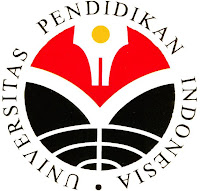Disusun Ulang Oleh:
Arip Nurahman
Department of Physics
Faculty of Sciences and Mathematics, Indonesia University of Education
and
Follower Open Course Ware at Massachusetts Institute of Technology
Cambridge, USA
Department of Physics
http://web.mit.edu/physics/
http://ocw.mit.edu/OcwWeb/Physics/index.htm
&
Aeronautics and Astronautics Engineering
http://web.mit.edu/aeroastro/www/
http://ocw.mit.edu/OcwWeb/Aeronautics-and-Astronautics/index.htm


Arip Nurahman
Department of Physics
Faculty of Sciences and Mathematics, Indonesia University of Education
and
Follower Open Course Ware at Massachusetts Institute of Technology
Cambridge, USA
Department of Physics
http://web.mit.edu/physics/
http://ocw.mit.edu/OcwWeb/Physics/index.htm
&
Aeronautics and Astronautics Engineering
http://web.mit.edu/aeroastro/www/
http://ocw.mit.edu/OcwWeb/Aeronautics-and-Astronautics/index.htm


Hyperspace is a plot device sometimes used in science fiction. It is typically described as an alternative region of space co-existing with our own universe which may be entered using an energy field or other device. Travel in hyperspace is frequently depicted as faster-than-light travel in normal space.
Hyperspace is sometimes used to enable and explain faster than light (FTL) travel in science fiction stories where FTL is necessary for interstellar travel or intergalactic travel. Spacecraft able to use hyperspace for FTL travel are sometimes said to have a hyperdrive.
Detailed descriptions of the mechanisms of hyperspace travel are often provided in stories using the plot device, sometimes incorporating some actual physics such as relativity or string theory in order to create the illusion of a seemingly plausible explanation. Hyperspace travel is nevertheless a fictional technology.
Authors may develop alternative names for hyperspace in their works, such as the Immaterium (used in Warhammer 40,000), Z space in Animorphs, or "Underspace" (U-space), commonly referred to in the works of Neal Asher.
Normal space
In normal 3-D space, the "shortest path" between two events A and B is found in the following way. First, look at all paths in 4-D space-time between A and B, and find the space-time path that takes the shortest time to traverse. Because of relativity, there is no such thing as universal time: so let the time be measured with respect to a clock whose motion matches the space-time path. Call this space-time path "P". Then the shortest path in space is simply the path in space traced by the space-time path P.
In strict mathematical terms, it may be impossible to define such a path, along which matter can travel. However, it usually is possible to find an infinite sequence of paths that converge uniformly to some limit, that is, some "limiting" path. Of course, under relativity, matter may not be able to travel along this limiting path, but light can travel along this path. In fact, the path of the light beam from A to B is the theoretical limit. No ship in normal space could follow the path of light in 4-D space time, but it can get arbitrarily close (until the energy required to go any faster exceeds the energy available).
This path (or limiting path) may not be unique: there may be many "shortest paths." Also, no path may exist; for example, suppose A lies in a black hole and B lies outside the black hole—since nothing can exit a black hole, such a path would not exist. Finally, because of the general relativity, this path is not a "straight line" in the strict Euclidean sense, but is "curved." For example, if we aimed a rocket at the Moon traveling near the speed of light, the shortest path to the Moon is still a curved path. In fact, even if we aimed a photon of light at the Moon, it will follow a curved path, since gravity bends all things.
The space along which the photon travels is, in fact, curved because gravity curves space itself. Just like traveling along the surface of water; if the surface of the water is swelled in a wave, then it would still be possible to travel in a straight line through the water (traveling underneath the wave,) but it would require more effort than just traveling along the curved surface of the water. It is still possible to travel in a straight line to the Moon, yet since the curved light beam is the best, the curved path close to this beam (following the path of the curved space) is better than the straight path.
This is because the light beam is technically actually traveling in a straight line, relative to the curved space it is traveling in, but the space itself is curved, so it appears to an outside observer that the light beam is traveling in a curved line. Of course, if we take energy expenditures into account, then the minimum energy paths are just transfer orbits and gravity boosts that Earth space agencies predominantly use although these are not 'fast'.
See also
- Faster-than-light transmission
- Jumpgate
- Stargate
- Four-dimensional space
- Spacecraft propulsion
- Wormholes
- Warp drive (Star Trek)
- Jump drive
- Hyperdrive
- Slipspace
- Boom Tube
- Spacetime
References
Further reading
- Hyperspace by Michio Kaku (Anchor)
- Surfing through Hyperspace: Understanding Higher Universes in Six Easy Lessons (Oxford University Press) by Clifford A. Pickover
- The Fabric of the Cosmos: Space, Time, and the Texture of Reality (Knopf) by Brian Greene
- Brian Stableford: Science Fact and Science Fiction: An Encyclopedia. CRC Press 2006, ISBN 0-415-97460-7, S.238-39 (eingeschränkte Online-Version (Google Books))
























No comments:
Post a Comment